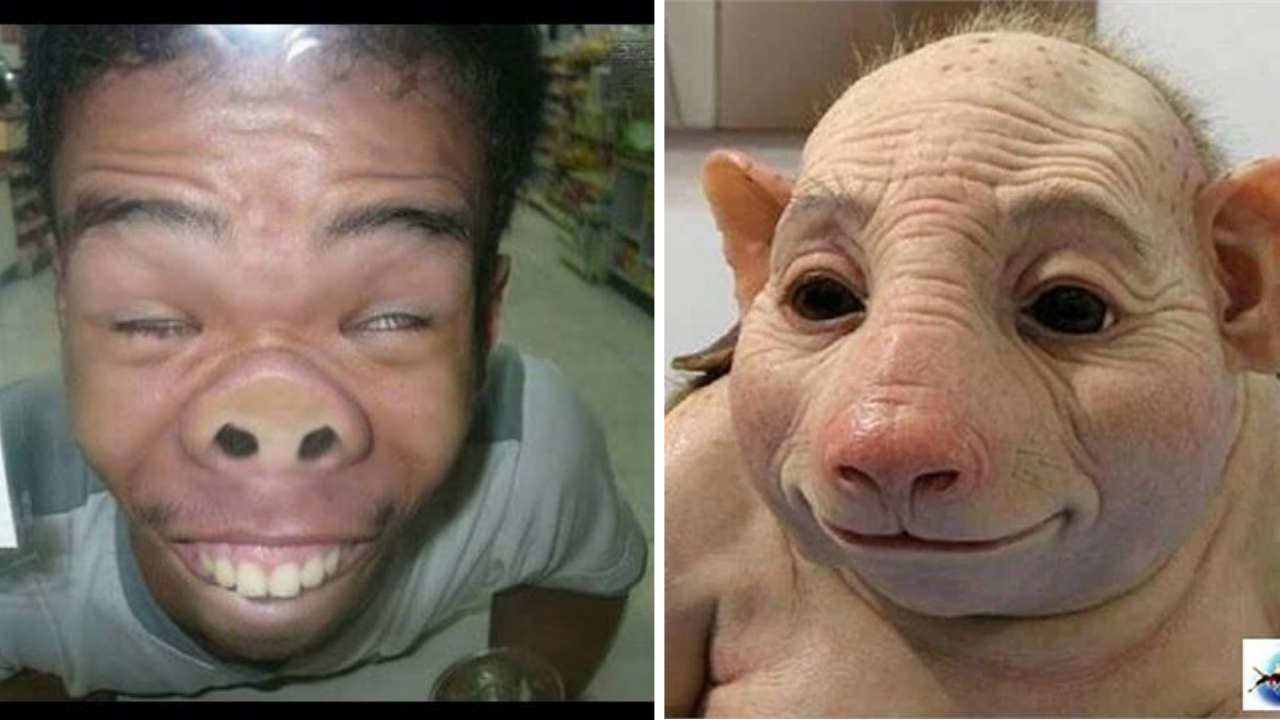The “Pig-Faced Man” is not just a character in urban legends but also carries various psychological and social implications, reflecting fears and prejudices within communities. Many believe that the story of the pig-faced man was created to warn about the consequences of bad actions or to generate fear about uncontrollable or inexplicable things.
Origins and Significance of the Pig-Faced Man Legend
In Vietnam, bizarre legends are often passed down in folklore and even elaborated upon through generations. The story of the pig-faced man originates from the idea of a person with an unusual physical transformation, with a face resembling that of a pig. Sometimes, people say that the pig-faced man has a human body but a face entirely like a pig, with a large nose, small eyes, and a wide mouth. However, these features have no scientific basis and are mostly the result of imagination or embellishment within folklore.
According to various studies, legends like the pig-faced man are a way for society to express fear of unexplained phenomena or of people who look unusual. In earlier times, when medical knowledge was limited, those with different features or rare conditions were often isolated and became subjects of legendary stories.
Different Stories About the Pig-Faced Man
The pig-faced man story appears in various versions, depending on the region. Some stories say that the pig-faced man resulted from a family curse due to an ancestor’s bad behavior or as a punishment for unforgivable sins. People have even added that the pig-faced man lives in seclusion, unable to integrate into society, and only appears at night, stirring curiosity and fear in the community. These tales often serve as warnings to discourage people from engaging in bad behavior.
In some places, people say that the pig-faced man only appears when someone breaks a certain vow or rule. These stories are passed down through generations and often used to scare children, instilling fear to keep them from doing wrong.
Impact of the Legend on Modern Life
Although the legend of the pig-faced man lacks scientific basis, it still captivates people’s attention, especially through modern media. Whenever a story or image related to the pig-faced man appears on social media, it quickly attracts curiosity and sparks lively discussions. People often share the story of the pig-faced man as part of folklore to create a mysterious, suspenseful atmosphere.
However, spreading bizarre stories like this can also have negative impacts, especially on those with different appearances or rare conditions. In reality, there are rare medical conditions that cause the face or other body parts to have unusual shapes. Those affected may suffer from stigma and even malicious rumors because of stories like the pig-faced man. Therefore, psychologists advise caution when sharing such stories, especially when there is no clear scientific evidence.
Conclusion
The legend of the pig-faced man is part of folklore, enriching the tapestry of oral traditions in Vietnamese society. Though it lacks scientific basis, the pig-faced man remains a symbol of curiosity and a warning about mysterious, uncontrollable phenomena. However, when approaching these legends, we should be cautious and not use them as tools for discrimination or harm toward people with different appearances. Instead of perpetuating fear and prejudice, we should view them as part of cultural history and focus on building a more understanding and compassionate community.






